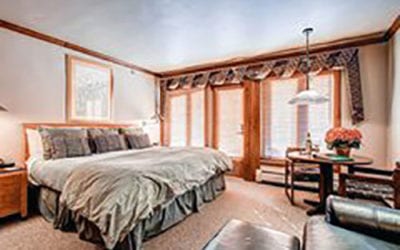To get a different taste of Thanksgiving, plan a visit to one of these four wonderful recreated and restored early-American venues to see how the holiday started and changed over the centuries from the Pilgrims’ original feast until the Industrial Revolution.
Thanksgiving is one of America’s favorite holidays. It is the time of year when most families come together to enjoy far too much food and share a day filled with conversations and football. However, planning a trip to these towns makes Thanksgiving a learning experience and the time after the meal can be far more enjoyable than focusing on tackles and touchdowns.
Plimoth Plantation recreates the first thanksgiving set in the early 1600s; Williamsburg and Mt. Vernon in Virginia are set in the mid-1700s, during the period of the Revolutionary War; and Old Sturbridge Village, Massachusetts presents an American village in the mid-1800s, just before the advent of the Industrial Revolution.
The fist Thanksgiving meal was, according to legend, held in Plymouth, Massachusetts, back in 1621. However, Berkeley Plantation in Virginia along the banks of the James River claims an earlier celebration in 1619. It wasn’t until 1863 that Abraham Lincoln proclaimed the last Thursday of November as an official Thanksgiving holiday. In the meantime the feasting in celebration of bountiful harvests continued unabated.
Plimoth Plantation, Plymouth, Massachusetts
This is the grandmother of all Thanksgiving feasts. This is where it all started way back in 1621. Best yet, at Plimoth Plantation the Thanksgiving meal experience can take you right back to the days of the Pilgrims – well as close as you can come these days.
Before or after the Thanksgiving meal visitors may tour Plimoth Plantation wandering through the displays that recreate life as it might have been back in the 1620s. The staff will demonstrate how the basics of living were carried out in the past and they speak in an early-American dialect that adds to the authenticity.
The plantation offers a series of Thanksgiving meal opportunities. In all, they will serve more than 3,000 turkeys. The meals come in all shapes and sizes based on your finances and whether you want to have a formal meal, eat with your fingers or load up at a buffet.
The 1627 Harvest Dinner with the Pilgrims takes place every Satufday during November as well as the day before and the day after. This feast, laid out on a “groaning board,” comes with Pilgrim etiquette lessons and live entertainment.
On Friday after Thanksgiving visitors have a chance to Eat Like a Pilgrim. Leave your forks behind and feast on porridge, turkey, stewed pumpkins and Indian pudding.
On Thanksgiving day, dine in the courtyard without reservations or stroll around the plantation grounds and enjoy a-la-carte offerings throughout the day. There is also a buffet that offers all you can eat with plenty of traditional Thanksgiving foods such as turkey, cornbread stuffing, butternut squash and creamed onions.
The Victorian Thanksgiving Dinner is the formal event with a meal set in the 19th century complete with harmonies of period singers accompanying the harvest fruits, escalloped oysters, native turkey, gingerbread, Indian pudding and plenty of pies.
Each of these meals includes museum entrance to the plantation and the Mayflower II, a full-scale reproduction of a 17th-century vessel, where visitors learn about the Pilgrims’ 1620 ocean-crossing voyage.
Williamsburg, Virginia
Williamsburg was one of the most important towns in early-American history. This town is a restored 18th-century city. There are 88 original structures, hundreds of restored buildings, and 90 acres of gardens within the 301 acre historic area. This is the town known for its political charge, where Thomas Jefferson dined in colonial taverns; and where George and Martha Washington strolled.
The first celebrated Thanksgiving in Virginia was held in 1619 at the nearby Berkeley Plantation. Although the mid-1800s were in between the days of the Pilgrims and Lincoln’s proclamation of the national holiday, the taverns and inns in the town prepare sumptuous feasts that include all the traditional fixings.
Stop in at the restored King’s Arms Tavern, Christiana Campbell’s Tavern and Shields Taverns where period-dressed staff serve traditional holiday meals on Thanksgiving Day. There are also feasts hosted in the Virginia Room at the Williamsburg Lodge. This is a wonderful overall experience where the historic town and setting are just as impressive as the Thanksgiving meal.
Mt. Vernon, Virginia
Just across the Potomac from Washington D.C. the palatial home, farm and gardens of George Washington sit overlooking the impressive river. Mt. Vernon provides a glimpse into the life and times of Washington as a politician, a general and a farmer.
Seeing the beautiful setting and wonderful house and the surrounding buildings makes Washington’s sacrifice for his country more impressive. He gave up this luxurious lifestyle to lead the Colonial army during the Revolutionary War and then again to serve as the first President of the United States. At the end of his service, he only had two years to enjoy his retirement here at Mr. Vernon before he passed away.
Though Thanksgiving wasn’t an official part of the calendar during the mid-1800s, it was always a period of harvest and a time of big meals and entertaining following the hard work of bringing in the crops. The mansion tour takes visitors through the main dining room, the parlors, sitting rooms, the kitchen and bedrooms. Outside, there are stables, barns, smokehouses, fields and gardens that were an intricate part of Washington’s life.
On the weekend of Thanksgiving, the Mt. Vernon Inn serves a popular Thanksgiving buffet in six intimate dining rooms with two fireplaces, and the mansion and gardens are open for normal tours. Make sure to call for reservations.
The following Friday, Saturday and Sunday Mt. Vernon presents an opportunity to visit the mansion lit by candlelight as it might have been 230 years ago for an evening of entertainment.
Sturbridge, Massachusetts
This living museum is a 200-acre recreation of an 1830s village. Houses, barns and shops have been moved from across the New England area and rebuilt to create this museum. It was during Sturbridge’s era, 1790 to 1840, the Industrial Revolution, that many of our Thanksgiving traditions were formed.
Though no dinner is served in the Old Sturbridge Village Museum, there are demonstrations of cooking and preparations for the holiday over the open hearth and in ancient ovens. There is a sermon at the meetinghouse, a shooting match and costumed interpreters outline the function of each of the restored houses, farms and shops in the village.
Visitors learn how to push peas onto a knife with a two-tined fork and then eat them off the knife. There are demonstrations about how villagers of the day figured out the temperature of a hot oven before thermometers. And the procedures for making Marlborough Pudding, an open-faced pie that was once the most popular Thanksgiving dish, are revealed.
For the Thanksgiving meal, head into the modern town of Sturbridge and dine in one of the period inns or restaurants that still evoke the mid-1900s. The Salem Cross Inn in West Brookfield, and the Publick House, in Sturbridge, both offer evocative settings and traditional meals.
These four experiences bring history into play during the Thanksgiving celebrations. They provide families an opportunity to learn about the founding and growth of our country as well as an atmospheric stage for one of our favorite holidays.

Charlie Leocha is the President of Travelers United. He has been working in Washington, DC, for the past 14 years with Congress, the Department of Transportation, and industry stakeholders on travel issues. He was the first consumer representative to the Advisory Committee for Aviation Consumer Protections appointed by the Secretary of Transportation from 2012 through 2018.







